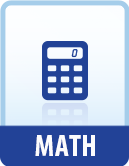|
This section contains 942 words (approx. 4 pages at 300 words per page) |

|
Addition is one of the four basic operations of arithmetic (the others being subtraction, multiplication, and division). In arithmetic, addition operates on the set of real numbers such that for any real numbers added together, another real number is uniquely determined. Additive notation is defined as the system of symbols used in the operation of addition to represent numbers and actions. For an expression like "2 + 3" the operation of addition is denoted by "+" (plus), while the numbers "2" and "3" are called summands. The familiar "+" sign has only been used to denote addition during the last four to five hundred years. Prior to that time other symbols or techniques were utilized. The "+" symbol appeared in print in 1489 under German mathematician Johann Widman (1462-1498) in his book Mercantile Arithmetic. However, Widman used the symbol to indicate excesses in business dealings, not as a mathematical operation. The "+" symbol is known to...
|
This section contains 942 words (approx. 4 pages at 300 words per page) |

|


